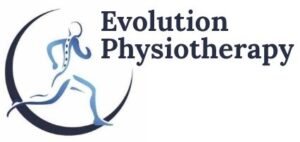7 Times to Consider Chiropractic Care Instead of Medication

What Is This Approach All About?
In today’s fast-moving world, it’s easy to treat discomfort with a quick fix. Over-the-counter painkillers are often the first thing people reach for when dealing with backaches, neck tension, or postural fatigue. But what if the discomfort returns the moment the medication wears off?
This is where chiropractic care comes into focus—not as an alternative for everything, but as an approach rooted in body mechanics and alignment. It’s designed to work with the body’s structure rather than override its signals. Instead of numbing pain, it explores why that pain is there in the first place.
Why Consider This Option Over Medication?
Medication may temporarily address inflammation or dull pain, but it doesn’t change how joints move or how strain builds in soft tissues. Relying solely on pharmaceuticals often leaves the underlying problem untouched. Chiropractic care works differently. Through manual adjustments, movement assessments, and hands-on techniques, chiropractors aim to identify and support physical causes of discomfort, without introducing chemical side effects.
For those navigating long workdays, recovering from injury, or living with repetitive strain, this approach offers a proactive way to manage mobility and function.
How Does It Fit Into Everyday Health?
Chiropractic care isn’t about chasing symptoms. It’s about improving how your body moves and responds to stress. Whether it’s lingering tightness after a long commute or postural issues from remote work setups, a chiropractor’s lens looks at movement as a whole. In many cases, these techniques are used alongside physiotherapy or exercise-based rehab, especially for those who want to remain active and self-aware about their physical health.
Below are seven moments when this type of care may offer more than a bottle of pills ever could.
1. When Pain Has No Clear Trigger
If you’ve ever experienced discomfort that seems to “just appear,” you’re not alone. Many aches don’t come with a warning or visible injury. Tension headaches, sore backs, and neck stiffness often develop over time through habits and posture.
Instead of masking these symptoms with medication, chiropractic care explores the underlying cause of the restriction. An evaluation may reveal subtle misalignments or movement imbalances contributing to ongoing irritation.
2. Following a Minor Collision
Not all injuries leave a visible bruise. After a low-impact vehicle collision, people often feel fine at first—only to experience tightness or pain days later. Whiplash and soft tissue strain are common examples.
Medication can reduce initial inflammation, but it doesn’t address the joint restrictions or neuromuscular changes that often follow. Chiropractic care can help restore motion, reduce muscle guarding, and prevent long-term issues from settling in.
3. During High-Stress Phases
When stress builds, so does physical tension. It often shows up in the shoulders, upper back, and jaw. While some turn to muscle relaxants or sleep aids, others seek hands-on methods to unwind physical strain.
Chiropractic methods often include soft tissue work and spinal adjustments that target these stress-heavy zones, helping the body feel less compressed and more mobile.
4. If Side Effects Are an Ongoing Issue
Not everyone tolerates medication well. Side effects like fatigue, digestive upset, or even brain fog can outweigh the short-term benefits. If that’s the case, manual therapy offers a drug-free route.
Chiropractic care focuses on improving motion, relieving pressure, and calming irritated nerves—without the risks of pharmaceuticals.
5. For Workplace-Related Strain
Desk jobs, heavy lifting, and repetitive tasks are a recipe for cumulative stress on joints and soft tissue. Relying on anti-inflammatories day after day doesn’t stop the cycle.
A chiropractic approach may identify contributing factors like spinal misalignment, uneven load distribution, or poor movement patterns. Addressing these can support long-term job comfort.
6. When Recovery Is Incomplete
After injury, pain might subside before movement fully returns. That can leave people avoiding certain motions or adapting habits to “work around” the tightness.
Manual care targets joint mobility and nervous system function, enabling greater mobility and rebuilding confidence. This is where chiropractic sessions can complement physiotherapy for fuller recovery outcomes.
7. Before Committing to Ongoing Medication
For people dealing with long-term conditions like osteoarthritis or sciatica, the suggestion of lifelong medication can be daunting. While medication can play a role, so can manual therapy.
With the right guidance, chiropractic care may reduce joint pressure, promote circulation, and improve tolerance for activity. For some, that shift in movement is enough to reduce reliance on pills.
Moving Forward
Pain is often a messenger, not the core problem. When the same issues keep showing up—even with medication—it may be time to look at how your body is moving, not just how it feels. Chiropractic care encourages a deeper approach: one rooted in alignment, joint function, and hands-on understanding.
For those in the city seeking an option that aligns with the body’s structure, Evolution Physiotherapy Center offers chiropractic services as part of its integrated care model—supporting people through informed, movement-based recovery strategies.
